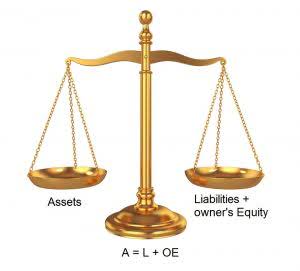
Insurance companies, for instance, receive premium payments upfront before having to make any payments; however, insurance companies do have unpredictable cash outflows as claims come in. Put together, managers and investors can gain critical insights into a business’s short-term liquidity and operations. Taken together, this process represents the operating cycle (also called the cash conversion cycle). For example, imagine the appliance retailer ordered too much inventory – its cash will be tied up and unavailable for spending on other things (such as fixed assets and salaries). Moreover, it will need larger warehouses, will have to pay for unnecessary storage, and will have no space to house other inventory.
- This, in turn, can lead to major changes in working capital from one month to the next.
- Current liabilities are any obligations due within the following 12 months.
- The benefit of neglecting inventory and other non-current assets is that liquidating inventory may not be simple or desirable, so the quick ratio ignores those as a source of short-term liquidity.
- Negative working capital can happen when a company’s assets reduce significantly below its current liabilities.
- The current assets section is listed in order of liquidity, whereby the most liquid assets are recorded at the top of the section.
How to Calculate Working Capital Ratio
To calculate the change in net working capital (NWC), the current period NWC balance is subtracted from the prior period NWC balance. The reason is that cash and debt are both non-operational and do not directly generate revenue. If the change in NWC is positive, the company collects and holds onto cash earlier. However, if the change in NWC is negative, the business model of the company might require spending cash before it can sell and deliver its products or services. If the Change in Working Capital is positive, the company generates extra cash as a result of its growth – like a subscription software company collecting cash for a year-long subscription on day 1.
Working capital in financial modeling
For example, individual architects in all 50 states require licenses with regular renewals. So do many engineering, construction, financial services, insurance, healthcare, dental, and real estate professionals. Be sure to include these expected expenses in your working capital formula.
- If you’d like more detail on how to calculate working capital in a financial model, please see our additional resources below.
- Research and financial considerations may influence how brands are displayed.
- Given a positive working capital balance, the underlying company is implied to have enough current assets to offset the burden of meeting short-term liabilities coming due within twelve months.
- Manufacturing companies, for example, incur substantial upfront costs for materials and labor before receiving payment.
- Other current liabilities vary depending on your occupation, your industry, or government regulations.
Smooth Business Operations
Positive working capital is when a company has more current assets than current liabilities, meaning that the company can fully cover its short-term liabilities as they come due in the next 12 months. Positive working capital is a sign of financial strength; however, having an excessive amount of working capital for a long time might indicate that the company is not managing its assets effectively. If your firm experiences a positive change in net working capital, it may have more cash to invest in growth opportunities or repay debt. If it experiences a negative change, on the other hand, it can indicate that your company is struggling to meet its short-term obligations. If the change in working capital is positive, then the change in current liabilities has increased more than the current assets. The Net Working Capital Formula and the Working Capital Ratio Formula are the easiest ways to determine whether your business has the cash flow necessary to meet your debt and operational demands over the next year.
But it is important to note that those unmet payment obligations must eventually be settled, or else issues could soon emerge. Since the company is holding off on issuing payments, the increase in payables and accrued expenses tends to be perceived positively. The rationale for subtracting the current period NWC from the prior period NWC, instead of the other way around, is to understand the impact on free cash flow (FCF) in the given period. Still, it’s important to look at the types of assets and liabilities and the company’s industry and business stage to get a more complete picture of its finances. Most major new projects, like expanding production or entering into new markets, often require an upfront investment, reducing immediate cash flow.

How Do You Calculate Working Capital?
A positive working capital indicates that a company has capital to work with. Working capital is the amount of money that a company can quickly access to pay bills due within a year and to use for its day-to-day operations. Note, only the operating current assets and operating current liabilities are highlighted in the screenshot, which we’ll soon elaborate on. The formula to calculate working capital—at its simplest—equals the difference positive change in working capital between current assets and current liabilities. Given a positive working capital balance, the underlying company is implied to have enough current assets to offset the burden of meeting short-term liabilities coming due within twelve months. Examples of changes in net working capital include scenarios where a company’s operating assets grow faster than its operating liabilities, leading to a positive change in net working capital.
Working Capital Metrics Formula Chart

It can be due to the payment of a long-term loan or an increase in current liabilities. An increase in current liabilities indicates an increase in accounts payable. While not always bad, continuous negative working capital can signal serious problems.

How is change in working capital calculated?
As a general rule, the more current assets a company has on its balance sheet relative to its current liabilities, the lower its liquidity risk (and the better off it’ll be). The net working capital (NWC) metric is a measure of liquidity that helps determine whether a company can pay off its current liabilities with its current assets on hand. This metric serves as the lifeblood of a company’s operations, reflecting its ability to meet financial obligations.

When inventory is sold, a company must go to the market and rely on consumer preferences to convert inventory to cash. Calculating your working capital is a quick way to gain an overview of your business’ cash flow. Proper working capital management gives you long-term solvency, which means long years of operation. Companies that find it hard to settle their liabilities on time end up folding up due to bankruptcy. The ability to pay short-term loans and other expenses is a massive advantage of managing your working capital. Uber today is far better than what they were 10 years ago, thanks to its ability to generate continuous positive working capital.





